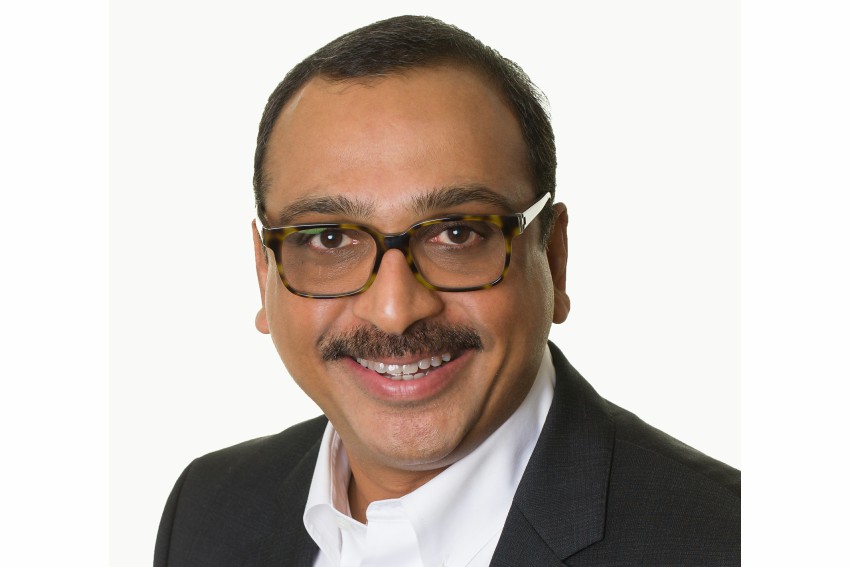

Rohit Aggarwal, president of U.S. company Huntsman Textile Effects, discusses why they choose Singapore as their Asian headquarters and how deeper integration and a growing consumer class in the ASEAN region offers great opportunity for textile firms like his. He also explains how Huntsman is investing in innovation to help both itself and its clients to be more sustainable and efficient, in an industry where environmental concerns have been brought to the fore.

Looking at the consumer market around the ASEAN community, as an American company that remains competitive in Singapore, what made you choose the city-state and what is the potential in the region for you?
Singapore has remained relevant to Huntsman’s needs as we have evolved here over the past 15 years. When we first arrived here, back in the early 2000s, the attraction was largely Singapore’s economic and political stability, educated workforce, and business-friendly environment.
We then looked to Asia for our new headquarters. As a U.S. company, locating a division’s global headquarters here in Asia was a big decision. We had to make sure we could serve customers in China, India, and the ASEAN region, and we had three possible locations in mind: Hong Kong, Shanghai, and Singapore. In the end, Singapore won hands down. The city-state was not only a good business environment, but also a good general environment for families to relocate.
Agencies like the EDB made everything work so quickly, smoothly and seamlessly. That allowed us to come here and that helped us to shape our business in Asia tremendously. Today, there is no hesitation again in conveying that the decision allowed our business to grow quite significantly in the last nine years.
The biggest story coming out of Asia is the ASEAN growth. The region has experienced incredible development over the last few years. What is the potential for you and for your operation? How do you see that evolution for the textile segment?
ASEAN’s textile sector has grown substantially over the last three to five years. Vietnam, for instance, has become Asia’s third-largest textile exporter in only six years. We expect the ASEAN bloc to remain very important in terms of global production, manufacturing, and exports. Here’s why:
First, there is an opportunity for ASEAN to create value through virtual vertical integration. China and India are both vertically integrated markets: they control everything from fiber to garment, and that is not easy to replicate. Virtual integration takes advantage of digital technology to boost intra-region collaboration. So we could see polyester fiber from Thailand made into fabric and garments in Vietnam for export.
Second, the size of the ASEAN consumer market is a great advantage for the region’s textile industry as disposable incomes rise. Half of Vietnam’s textile output is already consumed domestically and being able to trade within the ASEAN community creates even more value.
Third, there is a possibility that the ASEAN countries can provide a platform for investment as rising costs in China and India – for labor, energy, and environmental compliance, for example – make these markets less competitive and less attractive to investors. Huntsman Textile Effects remains very committed to ASEAN, which we view as not only fast-growing but also highly sustainable.
Huntsman provides services and products for your consumer base in Asia. You mentioned that most of the demand was growing from within Asia. How do you see the evolution of Huntsman based on the needs and the demands of your consumers?
First, there is a big shift towards domestic consumption in Asia.
Ten years ago, I would say that two-thirds of the world's textiles were consumed in the western world, primarily in Europe and the US, but two-thirds of that was produced in Asia. Today, it is much more balanced, thanks to rising incomes and the growth of the middle class in India, China, ASEAN, and elsewhere. In Asia, we are seeing growth rates of close to 10% in the domestic markets. And this is changing the value chain and the supply chain.
Indeed, your innovation to sustainability is one of your key drivers within the textile ecosystem. Huntsman has also incorporated the technology with the protection from the sun recently. What are the key defining competitive advantages of Huntsman in the region?
Innovation is at the heart of the Huntsman business model and we continue to invest significantly in research and innovation. We outspend our competitors by a factor of three or four, which allows us to continuously bring new technologies and products to the market and to our customers.
A very large portion of our innovation relates to sustainability. We believe strongly that environmental sustainability, using less water and less energy, leads to economic sustainability. There is no contradiction. Indeed, we see the two as intertwined. We work to help customers improve their efficiency while meeting the needs of consumers.
Take sun protection, for example. With our products and technologies, mills can create fabrics that protect the wearer from damaging UV-A and UV-B rays. The fabric is soft and nice on the skin and also durable. Even long exposure to sunlight or multiple washes will not degrade the protection or fade the colors. What’s more, our technology meets the leading standards for safe and sustainable textile production.
Using our products and expertise, customers can penetrate new markets and become more competitive while meeting their environmental obligations, using fewer resources, and reducing operating costs. We believe we will create a lot of value in the industry over the next three to five years through sustainable product and solutions.
0 COMMENTS